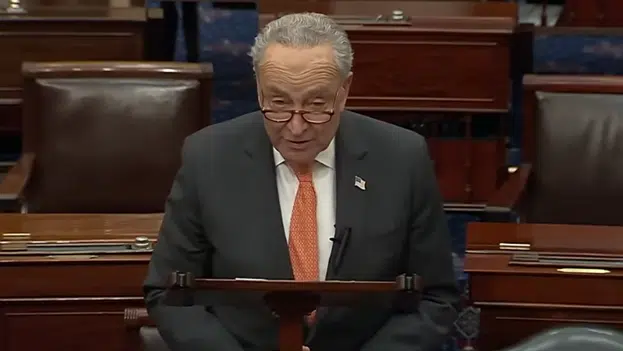By Kevin Mooney — Government agencies and international institutions that have worked tenaciously to vilify carbon dioxide (CO2) as a dangerous pollutant have done a great public disservice, Dr. Craig Idso, a scientist and author told audience members at the American Legislative Exchange Council’s (ALEC) annual meeting earlier this month. Contrary to what has been widely reported, CO2 is a key component to life on earth that could be beneficial to the environmental and humanity in particular, Idso explained during his talk in New Orleans.
The Environmental Protection Agency’s (EPA) endangerment finding issued back in December 2009 claims that the “elevated concentration” of GHG (Greenhouse) emissions in the atmosphere “endangers public health and welfare.” The EPA also claims it has the authority to issue new regulations under the Clean Air Act (CAA).
But Idso, who is the chairman of the Center for the Study of Carbon Dioxide, argues that conventional thinking is exactly wrong. He spells out in 55 ways, listed in alphabetical order, how CO2 actually enhances environmental conditions in a new book entitled: “The Many Benefits of Atmospheric CO2 Enrichment.” Idso co-authored the book with his father Dr. Sherwood Idso.
“Plants in a CO2 enriched atmosphere generally prefer warmer temperatures than those exposed to air with lower CO2,” Idso said as he described a series of experiments. “The doubling of the air’s Co2 concentration typically boosts the optimum temperature for plant photosynthesis by several degrees centigrade and this also raises the temperature at which plants experience heat related death.”
As a result of higher atmospheric CO2, earth’s plants are likely to sustain themselves within large portions of their natural habitats, which will also work to the advantage of animal life that depends on those plants, Idso observed.
“The end result is a future where there will likely be a great CO2 induced proliferation of regional biodiversity as opposed to extinctions of species globally,” he said. “Lots of peer reviewed research supports this outcome.”
Roger Helmer, a member of the European Parliament, and a noted climate skeptic, also took part in the panel discussion. Organizations like the United Nations International Panel on Climate Change (IPCC), omit key pieces of information from their reports, he said.
“Everyone knows CO2 is a greenhouse gas, what very few people seem to know is that water vapor is a much more significant greenhouse gas and so as far as I know we will not be able to control water vapor in the atmosphere as long as the wind blows over the ocean,” he noted.
Although the IPCC warns that heightened counts of CO2 will also accelerate the amount of water vapor, this reasoning overlooks the possibility of “negative feedbacks,” Helmer pointed out.
“It could also be that water vapor makes more clouds and this would increase the earth’s albedo and this means more sunlight and more energy would be reflected back into space,” he explained.
A renewed appreciation for CO2 as a naturally occurring, life sustaining element can help to redirect public policy away from costly, counterproductive initiatives favored by green groups, Robert Ferguson, president of the Science and Public Policy Institute (SPPI), suggested. Ferguson chaired the panel discussion.






